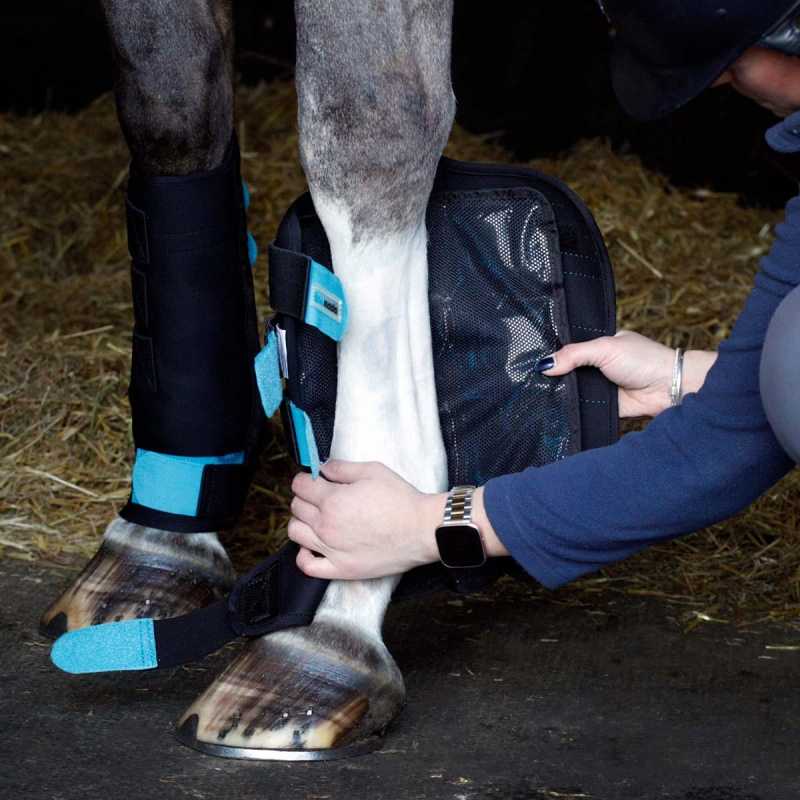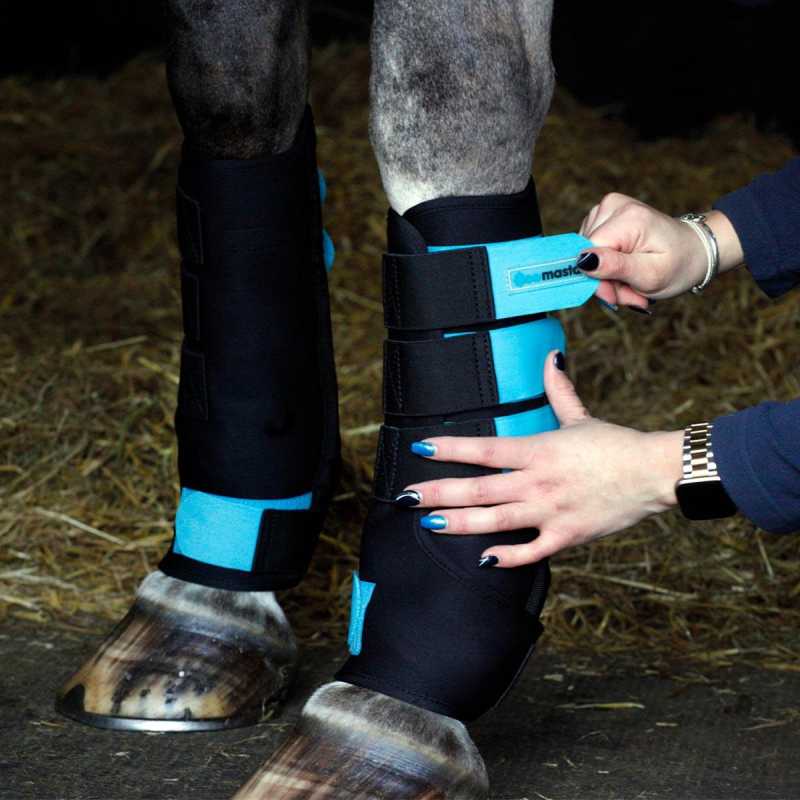
It’s well known that using a cold compress or ice pack on a strained muscle can decrease inflammation in the injured area and the global rise of the Wim Hof method for humans is largely thanks to the benefits of cold exposure. Cold therapy has been scientifically linked to injury repair but also to improved quality of sleep, more focus and an improved immune response.
For many years, icing has been a method used to treat injuries, thanks to its skills at reducing pain and swelling. Cold therapy works by constricting blood vessels and decreasing circulation to the area to healing can take place. But what can ice boots do for horses?
Ice boots are a special type of leg wrap designed to cool down the lower limb of a horse. This cooling down controls the heat and inflammation present in a horse’s tendons and ligaments. So, let’s have a look at what ice boots do for horses and how long you can leave ice boots on a horse.

What do ice boots help horses with?
The Ice-Masta Boots are designed to assist in the treatment and prevention of localised swelling and unwanted heat in the horse’s lower limb.
They are ideal for use directly after exercise to quickly reduce the temperature of tendons. The soft-feel gel pack remains pliable when frozen, ensuring close contact against the tendons and fetlock joint, this allows the boot to contour around the leg and lower limb for maximum contact to key areas.
The Ice-Masta Therapy Boot is ideal for travelling away to shows as well as everyday use on the yard, it can be kept flat in a cooler bag once frozen when away or in the freezer at the yard or home. The gel pack simply attaches to the top of the boot by hook and loop fastening and sits neatly behind a soft mesh lining that protects the skin from freeze burn.
How long do you leave ice boots on a horse?
How to use the Ice-Masta boots:
- Place the gel pack flat in the freezer for a minimum of 2-4 hours. The gel pack will remain soft after freezing.
- Ensure the outer straps of the boot are securely but comfortably fastened.
- Leave the ice boots on your horse for up to 40 minutes of cooling therapy treatment.
- For best results use directly after exercise.
- Can be worn on front or back legs.
- Hand wash outer only
The Ice-Masta Therapy Boot is highly adjustable due to the elastic on the straps. This allows you to alter the fit to suit a variety of horses. Please refer to the size guide for measurements.

How often should you ice a horse’s leg?
The answer to this question depends on your reasons for using icing as a care method. Some horse owners use ice boots for maintenance and injury prevention and others use it to treat an acute injury.
Using ice boots for horses to treat an injury
If you’re using cold therapy to treat an acute injury, it can be used three to four times a day for a maximum for 40 minutes at a time. Ice is best used on acute injuries within the first two days of the injury happening. Catching an injury early and using ice boots can help reduce the severity and thus improve the healing chances of a soft-tissue injury.

Using ice boots for horses as a maintenance tool
Using ice boots for maintenance post-exercise is a routine many horse owners swear by. Following a hard schooling session, a round of cross country or trip up the gallops putting ice boots on your horse can help the ligaments and tendons recover quickly. Again, a maximum time of 40 minutes is recommended and if the ice boots are part of a maintenance routine, wearing them once a day post-exercise is sufficient.
Veterinarians and equine professionals have varying views on how best to use ice boots and cold therapy. We do recommend speaking to your vet or equine professional on their next visit if you’d like more advice on how ice boots could fit into your horse’s routine and benefit their limb health.
